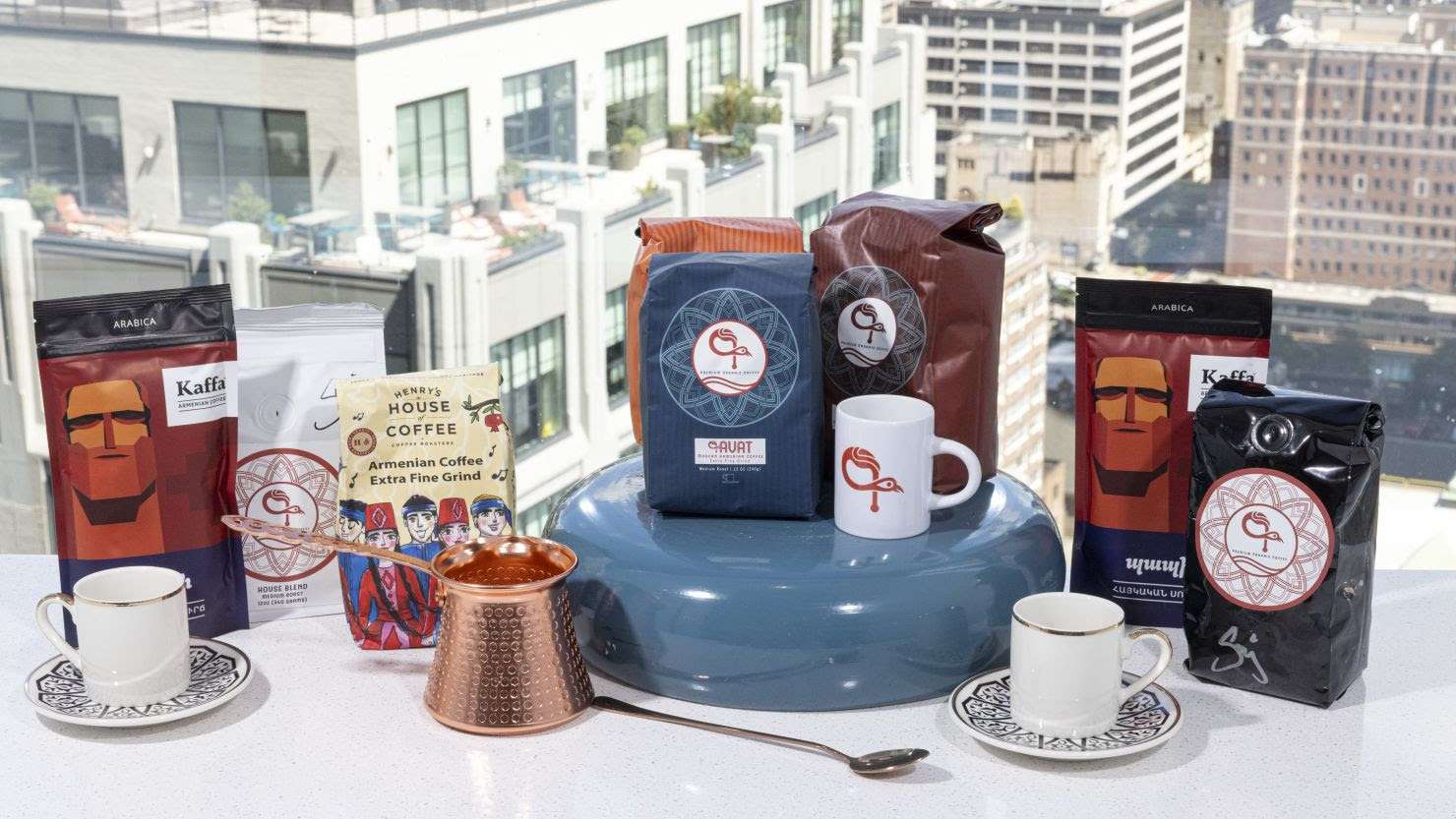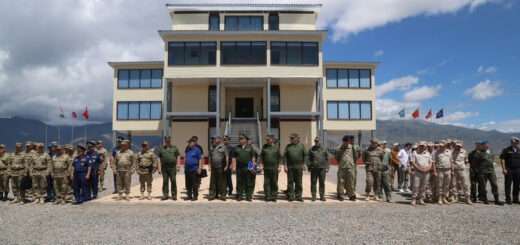Here’s how to brew Armenian coffee, according to System of a Down’s Serj Tankian

Molly Flores/CNN Underscored
Armenian coffee quick picks
An attractive Armenian coffee pot: Henry’s House of Coffee Armenian Coffee Pot
A long-handled coffee scoop: Henry’s House of Coffee Coffee Scoop
Delicious Armenian coffee: Kavat Premium Modern Armenian Medium Roast Coffee
It’s often said that coffee is a universal language, and it’s true — every country has its unique blend, bean or style, often with a special twist that tastes like home. For Armenia, a picturesque, mountainous nation in the Caucasus, coffee goes far beyond the pot; it’s a rich, steaming phenomenon steeped in history and tradition.
Armenian coffee has been prepared the same for generations: in a long-stemmed pot over a flame. It’s easy to make, affordable and, most importantly, a guaranteed caffeine kickunlike anything you’ve tasted before.
As two testing writers raised in Armenian households, we know a thing or two about Armenian coffee. It’s a staple in every Armenian home that always reminds us of family, food and a guaranteed good time, which is why we’re sharing this guide to Armenian coffee, or soorj. We brewed one too many cups and tested the best beans to get your fixation started.
We also spoke to System of a Down lead singer and Armenian coffee enthusiast Serj Tankian. Last year, the hard rock icon opened Kavat Coffee Café, a coffee shop and art gallery in sunny Los Angeles, California, serving delicious treats and beverages. We sat down with him to learn the secrets of making a great cup of Armenian coffee and to hear the history of soorj.
Along with Kavat Coffee, we tasted three other Armenian coffee brands: Kaffa, Henry’s House of Coffee and Edna’s Coffee. While the brewing process remained the same, each blend introduced a new flavor to the traditional drink we know and love. Whether you’ve tried soorj before or you’re craving something new, this roundup has the scoop on all things Armenian coffee.
If there’s one thing Tankian is an expert on, it’s how to stay energized, and his fuel of choice is a good cup of coffee. He’s what you would call a Renaissance man. Although most recognized as a legendary hard rock lead singer, his accolades are diverse and varied. He’s an award-winning lyricist, the founder of an expansive record label, a human rights advocate and a visual artist. He’s done it all, from penning the bestselling memoir “Down With the System” to dropping “Foundations,” an EP of new music, on Gibson Records.
Now he owns Kavat Coffee Café in LA, the namesake of which translates to “cup” in the Western Armenian dialect. Before Kavat Coffee Café became a brick-and-mortar establishment, the brand sold what it dubs “Modern Armenian Coffee” online, along with other beans and blends.

Gareen Puglia/CNN Underscored
For Tankian, coffee is more than a ritual; it’s a passion he associates with his upbringing in an Armenian household — an identity marker crucial to his music, art and activism. “My grandmother and mom would make coffee while we were kids, and you could smell the coffee wafting in the house. It makes it feel like a home,” he said fondly. “With System of a Down and my music, awareness about the Armenian genocide was very important to us because all the guys in the band are Armenian and our grandparents were survivors, so in our way, we kind of spread Armenian culture and awareness.
“Coffee reminds me of peaceful and beautiful times of youth. And when I walk into any room, if I smell coffee, it always makes me feel better,” Tankian continued. Many Armenians can attest to this nostalgic and comforting connotation of coffee, family and culture. This was one of the motivating factors behind his decision to start an Armenian coffee line.
“It has these flavors of who we are, and it’s an organic way of spreading our culture, which, to me, is the most important thing anyone can do in this life. The beautiful part of humanity is our differences. Flags, nations, military, all of this stuff, they come and go, borders change — but it’s our diversity that makes us beautiful.”
What makes Armenian coffee so unique is that it’s ground to a powderlike consistency and brewed in an open pot, called a jazzve, over a flame. It’s then stirred until the mixture begins to bubble and rise. The result is a bold flavor and rich consistency, packed into a tiny demitasse cup. “The good thing about Armenian coffee is that it’s not as strong,” Tankian said, “especially if it’s not light roast. Generally, it’s medium to dark roast so that you can have it later in the afternoon.”
Tankian peeled back the layers behind the origins of this unique blend: “It’s the traditional way of making coffee, just like Greek coffee, Arabic coffee, Turkish coffee, etc.” Tankian’s own Kavat-brand coffee is made from certified organic Ethiopian beans, which have historical ties to Armenia due to their shared alphabet and religions. “There’s this incredible bond between Ethiopia and Armenia, and so the coffee, I’m sure, came with that bond and that relationship,” he said.
While the communal aspect of coffee culture is not unique to Armenia, in Tankian’s experience, connecting over a cup of soorj is deeply ingrained in the fabric of Armenian culture. “If you go to Armenia right now, for example, and you walk on the street in Yerevan, people will be having coffee and talking. It’s a place to gather; it’s a place to ruminate; it’s a place to share; it’s a place to laugh and talk and, you know, it’s an occasion,” he said.
With Kavat, Tankian is most excited to introduce a timeless tradition to a new audience. “This was another way of spreading our culture and showing people that this small group of people, these Indigenous people from the other part of the world, have this thing, [soorj], that you’ve never heard of.” And according to Tankian, it’s good — really good. So good, in fact, that a cup can even predict your fortune.
How does it work? Thick ground remnants sink to the bottom of a cup when it’s nearly finished. Too bitter and gritty to drink, most would discard the coffee grounds. However, in Armenian culture, these leftovers are considered clues to someone’s fortune in the ancient practice of coffee cup readings.
An expert coffee reader, usually a wise matriarch, will instruct you to flip your cup onto a saucer and leave it to dry for a few minutes until the muddy remnants leave behind intricate patterns. “It’s extrapolating and translating visual images from a cup of coffee left over by the sediments of the actual bean,” Tankian said. “It’s kind of like reading modern art. It’s a way of fortune-telling, and it’s the universe conspiring in the way that the universe generally does, which is more intuitively and through the arts in telling a story.” This “reading” is a skill passed down through generations, one cup of soorj at a time.
Tankian grew up listening to these readings from his grandmother and mother. “I would always know it was happening because I would hear, ‘There’s news coming’ and I’d be like, ‘Oh, someone’s reading a cup.’ And sometimes those stories would scarily come true.”
How to make soorj, step by step
“Each family has a different way of doing things,” Tankian said, but the basics remain the same. To brew, you’re going to need a jazzve — or cauldron, as Tankian refers to it — Armenian coffee, a spoon to scoop and stir, and heat to get the mixture to boil. “You’re going to be using the cauldron on a fire. You could also use the electric stove or a portable stove,” he added.
Tankian can testify to brewing Armenian coffee on the go using portable appliances. He’s brewed it everywhere from backstage venues to tours with fellow coffee-loving bandmates. “It’s actually easier to make Armenian coffee on the road than it is to make an espressobecause with an espresso you need a machine.” He even showed us an electric jazzveavailable at Kavat Coffee that operates like an electric tea kettle.
“We do have a step-by-step process, and it’s actually on the packaging of our coffee,” Tankian said. “Naturally, we realize that most people are not going to know how to do it.” According to Kavat’s instructions:
- Add 3 ounces water to a small pot with a spout over medium heat
- Add sugar and coffee, and stir frequently until the mixture reaches a boil
- Remove from heat, continue stirring and return to boil again
- Repeat one more time for a total of 2 stirrings and remove from heat
- Pour into an espresso cup and serve hot
As Tankian mentioned, each family has a different method of brewing soorj. For instance, his mother added a bit of sugar to the coffee, while others prefer it bitter and black. Some families measure water with the Armenian coffee cup itself, adding one scoop of coffee grounds per demi cup of water. These small cups are comparable to espresso cups, meant for savoring soorj. The flavor of the final product is undeniably strong, meaning you only need a petite portion in order to feel the caffeine kick.
Attention to detail will be your guiding force when making Armenian coffee. While stirring the mixture, the coffee will bubble and rise as if it’s about to boil over. This is when you’ll want to swiftly remove it from the heat source. It’s a delicate and fickle process; there’s a fine line between burning the batch and making a perfect, steaming cup of coffee. You’ll need the same instinct that kicks in when boiling pasta, ensuring the water doesn’t boil over in a flash.
Stir the coffee with intention and let it boil. However, once the bubbles build, it’s time to take the pot off the heat. Most jazzves are conveniently designed with a spout to pour coffee directly into traditional cups.





